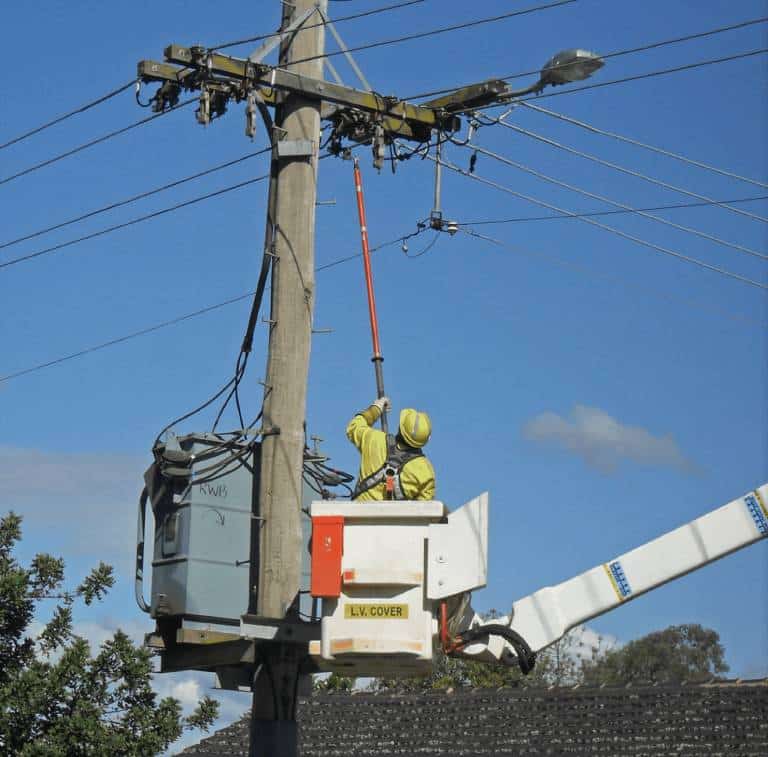At Burlington Safety Laboratory, we’re committed to safety and thoroughly testing equipment so it offers the best possible degree of protection. Peter Senin, Burlington’s late president, helped lead the charge in creating safety guidelines used by the National Association of Independent Laboratories for Protective Equipment Testing (NAIL for PET), and we’ve been creating testing procedures that uphold the same mission for over 40 years.
Our testing processes meet or exceed the standards of ASTM, ANSI, OSHA, and NIST, and we test a wide range of safety equipment to ensure compliance. Learn more about the role of high-voltage hot sticks in maintaining a safe work environment.
What Is a Hot Stick?
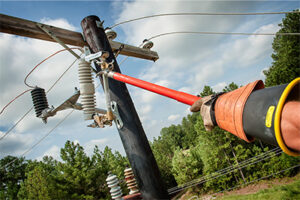 Line technicians use hot sticks while near energized equipment and power lines to avoid making contact with or going too near to live electricity sources. High-voltage electricity sources are extremely hazardous for operators and repair technicians. Not only can direct contact be dangerous or even fatal, but the electricity can cause arc flashes: transfers of electricity through the air toward the ground, endangering people within range.
Line technicians use hot sticks while near energized equipment and power lines to avoid making contact with or going too near to live electricity sources. High-voltage electricity sources are extremely hazardous for operators and repair technicians. Not only can direct contact be dangerous or even fatal, but the electricity can cause arc flashes: transfers of electricity through the air toward the ground, endangering people within range.
The sticks themselves are fiberglass rods at least four feet long with fixtures at the end that can press switches and manipulate parts. Technicians hold the handle of the stick to reach and maneuver parts on the other end. Because fiberglass does not conduct electricity, these tools keep workers safe from electricity. The four-foot length also ensures enough clearance to mitigate the risk of arcing and shock by keeping workers and their hands out of the arc zone.
Types of Hot Sticks
Manufacturers produce a wide range of hot sticks of different lengths, materials, and attachments to help line technicians complete repairs and maintenance on high-voltage equipment or systems. They fit into two broad categories: telescoping hot sticks and shotgun hot sticks.
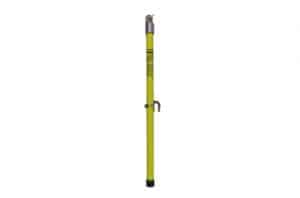 Telescoping Hot Sticks
Telescoping Hot Sticks
Telescoping hot sticks are extendable tools. They feature several hollow tubes of successively larger diameters so they fit neatly inside each other and then extend the total length of the hot stick. Technicians can extend one, several, or all of the sections based on the distance between themselves and the surface that needs to be reached. This versatile design allows technicians to reach electrical equipment at different heights without having to use a large collection of separate tools.
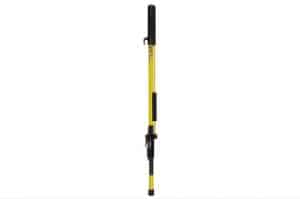 Shotgun Hot Sticks
Shotgun Hot Sticks
Shotgun hot sticks help line technicians easily reach, remove, and install components. Rather than having separate sections that operators extend manually, shotgun hot sticks have a sliding mechanism to increase the length of the stick. Operators can attach the far end of the stick to a disconnect ring, pull the trigger at the other end, and elongate the stick. Once the stick is the right length, the operator can disengage the trigger and use the stick.
When and How to Use a Hot Stick
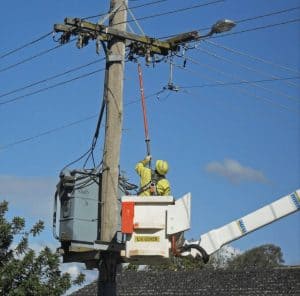 Operators and technicians should use a hot stick whenever working on or near live electricity. By using the sticks instead of directly touching the equipment, workers stay isolated against the risk of electrical shocks. Because the hot sticks are long, they also isolate workers by keeping them out of the arc zone. Hot sticks should be used whenever there is a risk of electric shock, blasts, and arcing; specific circumstances include:
Operators and technicians should use a hot stick whenever working on or near live electricity. By using the sticks instead of directly touching the equipment, workers stay isolated against the risk of electrical shocks. Because the hot sticks are long, they also isolate workers by keeping them out of the arc zone. Hot sticks should be used whenever there is a risk of electric shock, blasts, and arcing; specific circumstances include:
- Proximity with equipment or lines that have medium or high voltage levels
- When making repairs and adjustments to medium-voltage energized equipment
- Operating disconnects or cutouts of any voltage level
- When applying safety grounds for equipment at any voltage level
Technicians can use these sticks to directly manipulate cables, fuses, and other components. For example, line technicians can use a hot stick to hook terminated cable ends inside a transformer to “unplug” the cable or temporarily disconnect it. Then they can use the tool to reconnect it after completing repairs. Line technicians can also use hot sticks to position a fuse back into place after an outage.
Contact Burlington Safety Laboratory for Your Hot Stick Needs
Safety equipment is crucial for protecting people and surrounding environments. The safety equipment itself must comply with strict product quality standards to perform this duty reliably. At Burlington Safety Laboratory, we provide comprehensive, specialized testing for safety tools. Contact us today to learn more or request a quote. You can reach our team for assistance online or over the phone at 800-220-2120.

